Running Shoe Rotation Guide & Tool
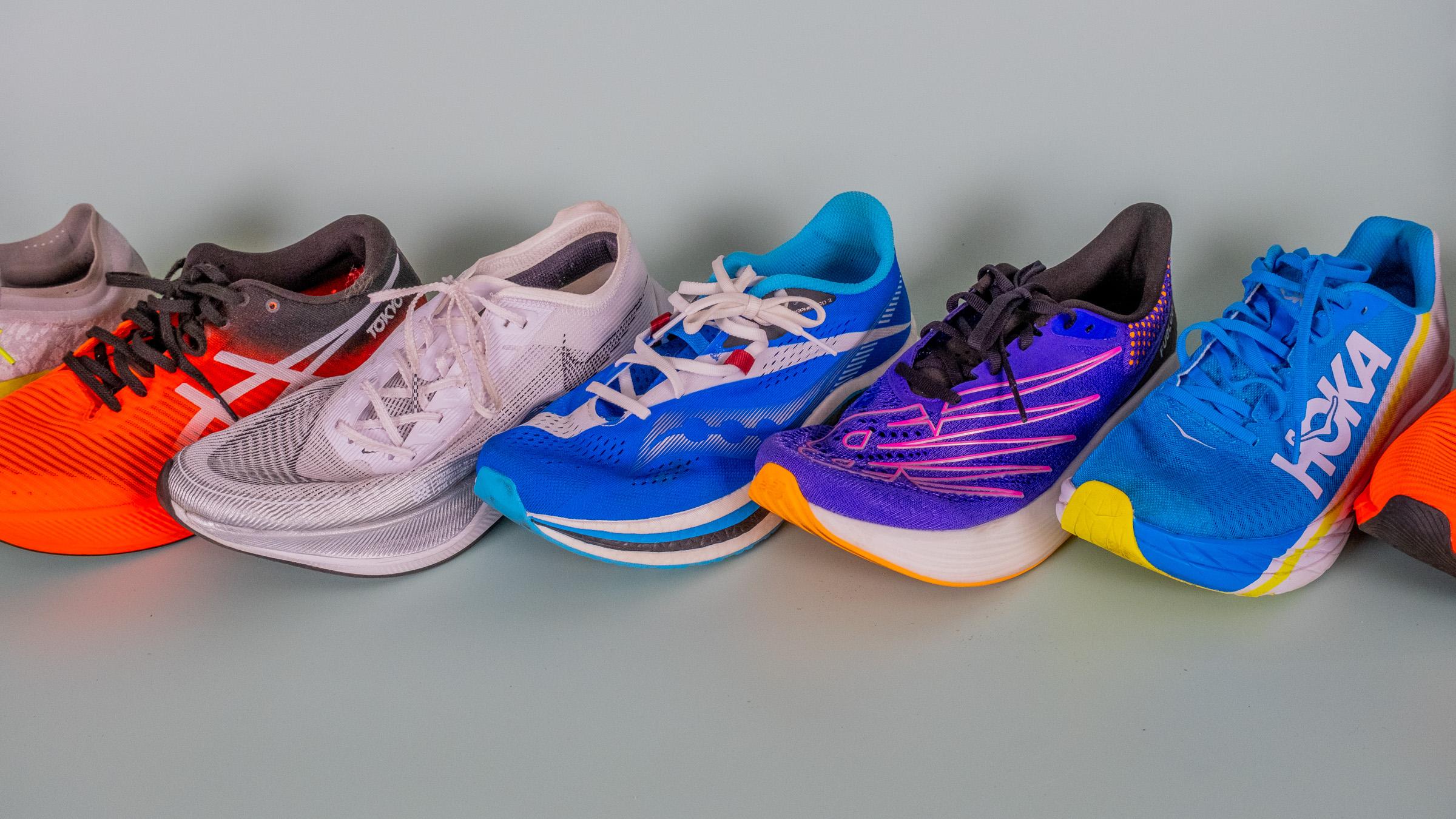
We spent 40+ hours researching running shoe rotation and creating a tool that helps you add a new pair of shoes to your rotation. This guide covers shoe rotation in great detail: how much it matters, how to make it and what even advanced runners can do about it.
Shoe rotation consists of all the shoes you use for running. Beginners should not overthink it and should know that it’s completely OK to have (start with) only one pair of shoes! It will probably be a versatile (workhorse) one in the daily-trainer realm.
The purpose of shoe rotation is to:
- Help you improve your running performance
- Lessen the chances of getting injured.
Tool: Build your running shoe rotation
RunRepeat's tool will suggest a pair of shoes that could be added to your rotation. Give it a go:
Shoe rotation: is it more than hype?
On one side, there’s a group of people claiming it’s only a marketing thing so that runners who join the hype would spend more money on running shoes - especially the pro ones that they probably don’t even need.
On the other side, there are runners who swear in the rotation because:
- You must have a pair for each type of running workout,
- The midsole might need time to recover in between runs,
- They don’t want the same running experience every time they go for a run,
- Running in different pairs of shoes helps with strengthening your legs and injury prevention.
And they are right.
This study included 254 runners and showed that exercising other sports and multiple shoe use can help prevent running-related injuries.
Also, this study had runners run for at least 200 miles in the same pair of shoes to test how running changes with midsole degradation. It was concluded that runners modify their patterns to maintain constant external loads. These changes were independent of the cushioning technologies (air/gel/spring).
What shoe rotation depends on?
Basically, what goes into your shoe rotation depends on
- Why you’re running (do you care about PBs or run for pleasure)
- How often you run (you might need more pairs of shoes if you run every day or even twice a day)
- Terrain type (road, trail, or both?)
- Your budget
- Your shoe-marketing tolerance levels.
Given that RunRepeat started with the purpose of helping people find that one right shoe, we’d always advise double-checking whether you really need that new shoe you put your eyes on, rather than impulse-buying it and then leaving other shoes unused. Every shoe wants to see miles.

When focusing on your goals, shoes are usually split into 2 groups: running shoes for slower runs and running shoes for faster runs.
How to build your shoe rotation
Basically, what goes into your shoe rotation depends on
- Why you’re running (do you care about PBs or run for pleasure)
- How often you run (you might need more pairs of shoes if you run every day or even twice a day)
- Terrain type (road, trail, or both?)
- Your budget
- Your shoe-marketing tolerance levels.
Given that RunRepeat started with the purpose of helping people find that one right shoe, we’d always advise double-checking whether you really need that new shoe you put your eyes on, rather than impulse-buying it and then leaving other shoes unused. Every shoe wants to see miles.
Trail running shoe rotation example: Merrell Vapor Glove 4 for that barefoot feel on soft ground; zero drop Altra Superior 4.5 for longer technical runs (super cushioned forefoot!); Inov-8 TrailRoc 270 for runs when traction matters the most and also some drop (4mm) is appreciated; Salomon S-Lab for fast short runs (aggressive and tight fit), and Nike Wildhorse 7 for plushy recovery runs.
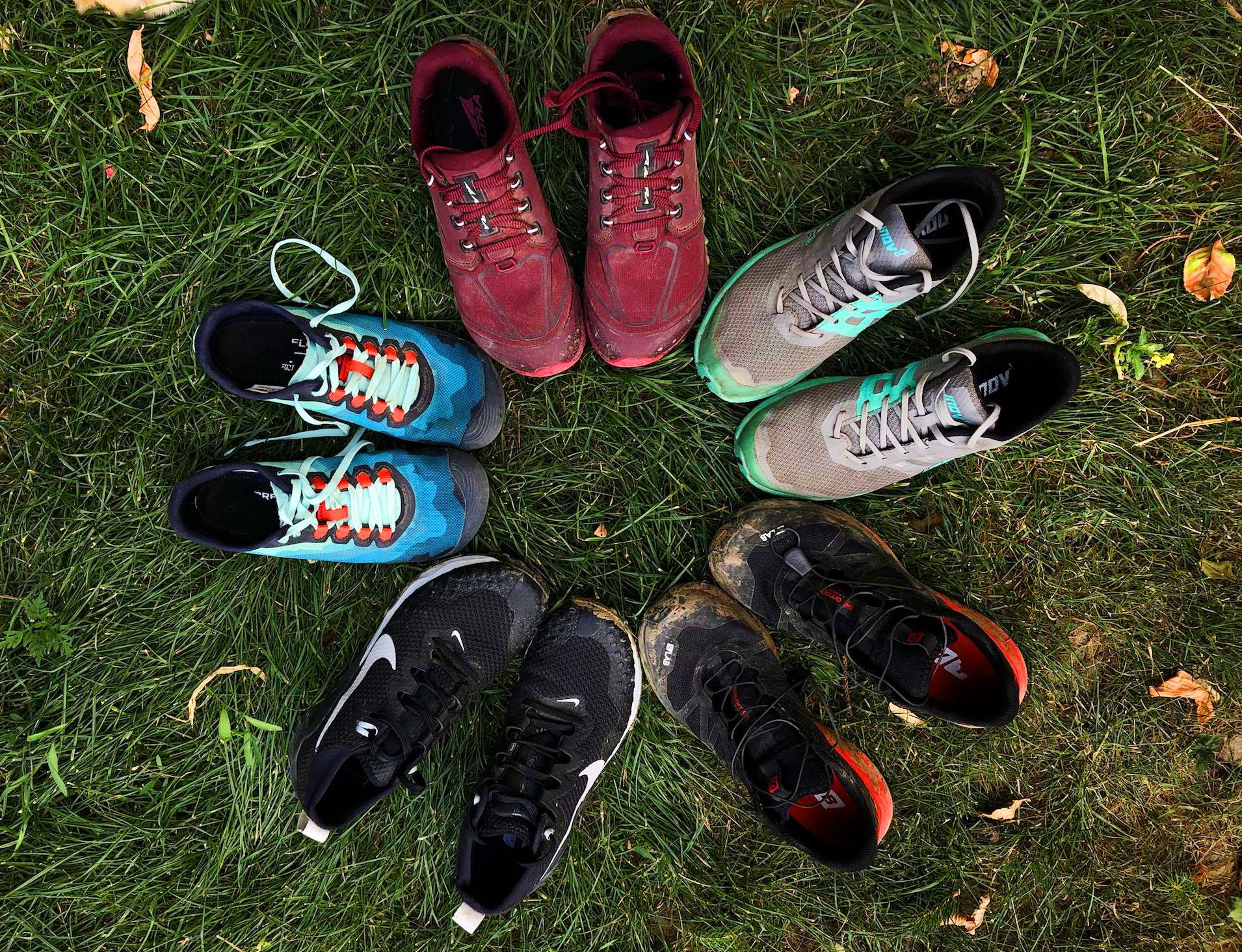
Are you ready for a new shoe?
Check your running experience and decide for yourself.
Keep in mind that this is based on the type of training only. You should always take into account your pronation and foot strike.
| Building your shoe rotation | |
| Your running experience | Consider adding this shoe to your current rotation: |
| You're a beginner or prefer jogging and easy runs | Daily trainer for every day runs. Usually cushioned, comfortable and great for beginners or easy runs. Some are versatile enough that you can pick up the pace in them, but it's not something they excel at. |
| You are able to pick up the pace and have a few faster runs a week. | Speed shoe for tempo runs. Light shoes, usually with less protection and cushioning. Their design and feel (ride) inspire you to run faster. This is usually the 2nd shoe added to the rotation |
| You want to race. Your speed shoes are not good enough. You want more. | Race shoe. PBs. New records. Shaving off those few seconds or even minutes. From premium ones (carbon-plated shoes) to more affordable ones. Out of all shoes, these are the least durable and usually the most expensive. Along with the tempo shoe and a daily trainer, these 3 usually make the 3-shoe rotation. |
| Your daily trainer is a bit too much for when you go on really easy runs. You want something comfortable for short runs. You want recovery. | Recovery shoe for slow days. These shoes hug your feet. They are usually really cushioned: softer and thicker midsoles reduce impact forces and provide remarkable cushioning effects (source). Once you get the taste of racing and serious tempo work, you naturally feel the need to add the recovery shoe to your rotation. |
It’s also important to note that someone’s tempo shoe might be your race shoe. Just like someone’s recovery shoe will be your daily trainer. That’s the beauty of running shoes. Find what works for you.
5 Tips for experienced runners
1. Rotate that heel drop
We wrote a lot about heel to toe drop. Now it’s time to put that into action.

Saucony Freedom 4 (top), a daily trainer with a 5.2mm heel drop and ASICS Novablast 2 (bottom), a daily trainer with a 13.7mm drop.
Check the heel drop of the running shoes in your rotation. If they are all in the same range, try adding a shoe with a heel drop from a different range.
| Activation of leg parts in lower heel drop (1) and higher heel drop (2) | |
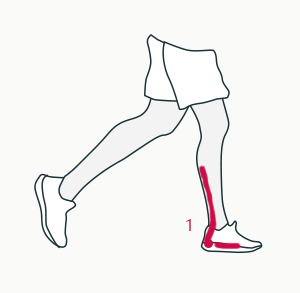 |
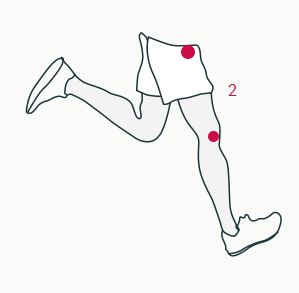 |
What you can expect:
- When adding zero-drop or low heel drop shoes to your rotation, your lower legs will work more (feet, Achilles, ankles).
- When adding high drop shoes to your rotation, your knees, thighs and hips will work more. If running in a 10-13mm heel drop shoe for the first time, your iliopsoas might ache a bit.
- If a new heel drop is added to your rotation, your newly activated muscles might feel sore on the day of the run or tomorrow
- In time, stronger muscles in your legs.
Don’t overdo it. Don’t go from 10mm to zero drop. Take it easy and see how your legs are responding. If you’re new to this, you will feel different muscles activating and maybe even aching after the run. Welcome to the world of heel drop enthusiasts!
2. Go trail running
The most important words in the world of trail running shoes are grip and traction. This means that outsoles covered in lugs are the biggest difference between trail and road running shoes.
With trail running shoes you’ll also be able to differentiate a race shoe, a daily trainer, etc.
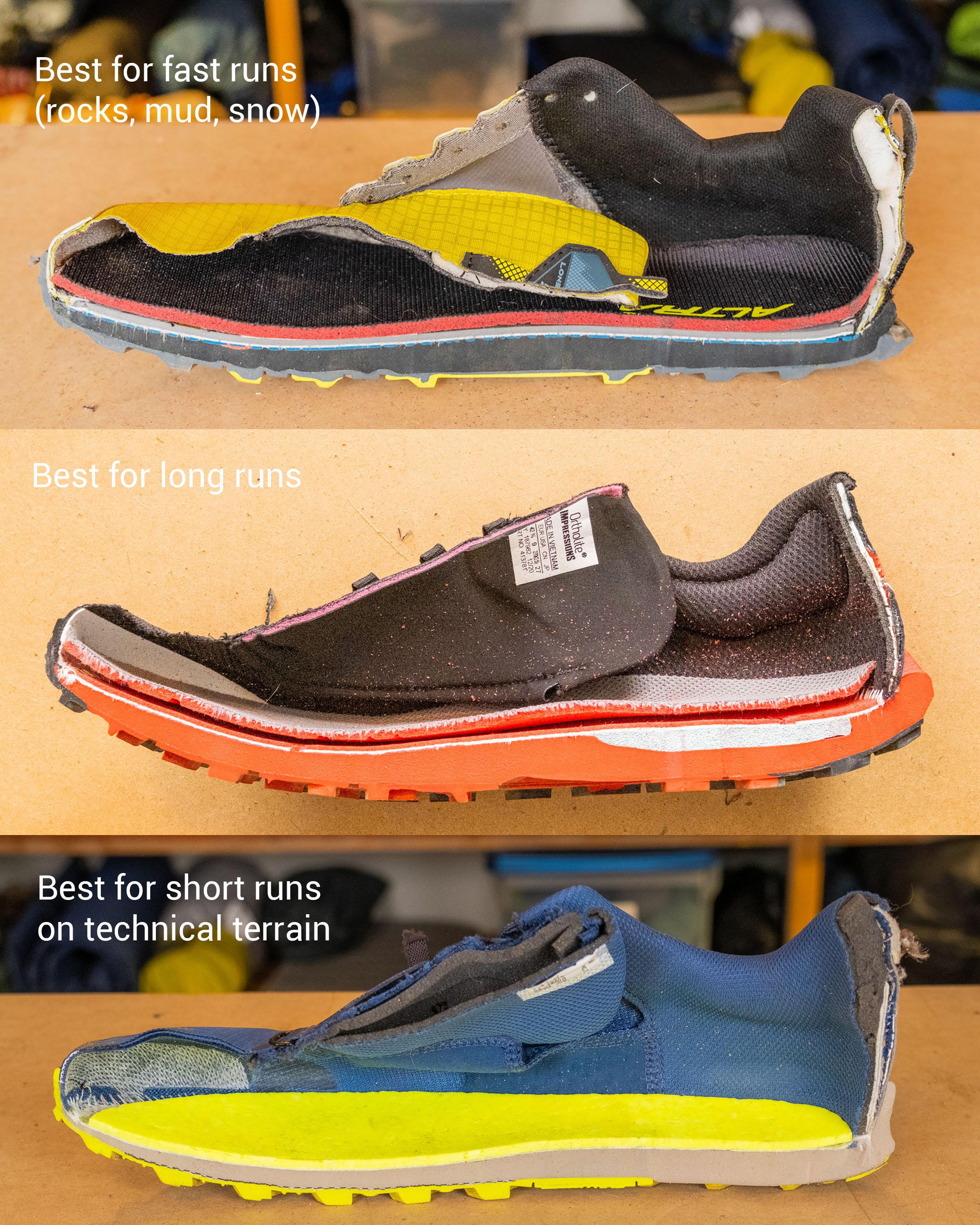
Different purpose of trail running shoes (up-down): Altra Lone Peak 5.0, Salomon Sense Ride 4, Saucony Peregrine 11
3. Start running downhill (more)
Running downhill has numerous benefits and should be included in your running routine if you’re taking your running seriously. Especially if you prefer to run long distances.
Running downhill causes more damage to your muscles than running on mainly flat terrain. While it can be really difficult (hello shaking and aching), you can get used to it and prepare your muscles for future races.
This is a good enough reason to find downhill and get a pair of shoes that will enable you to do downhill intervals. Make sure not to overstride and look for enough cushioning at the forefoot.
4. Get a long-distance shoe
Really advanced runners might also recognize the need for a long-distance shoe. Next to daily trainers and recovery shoes, these are in the “slow” section of the rotation.
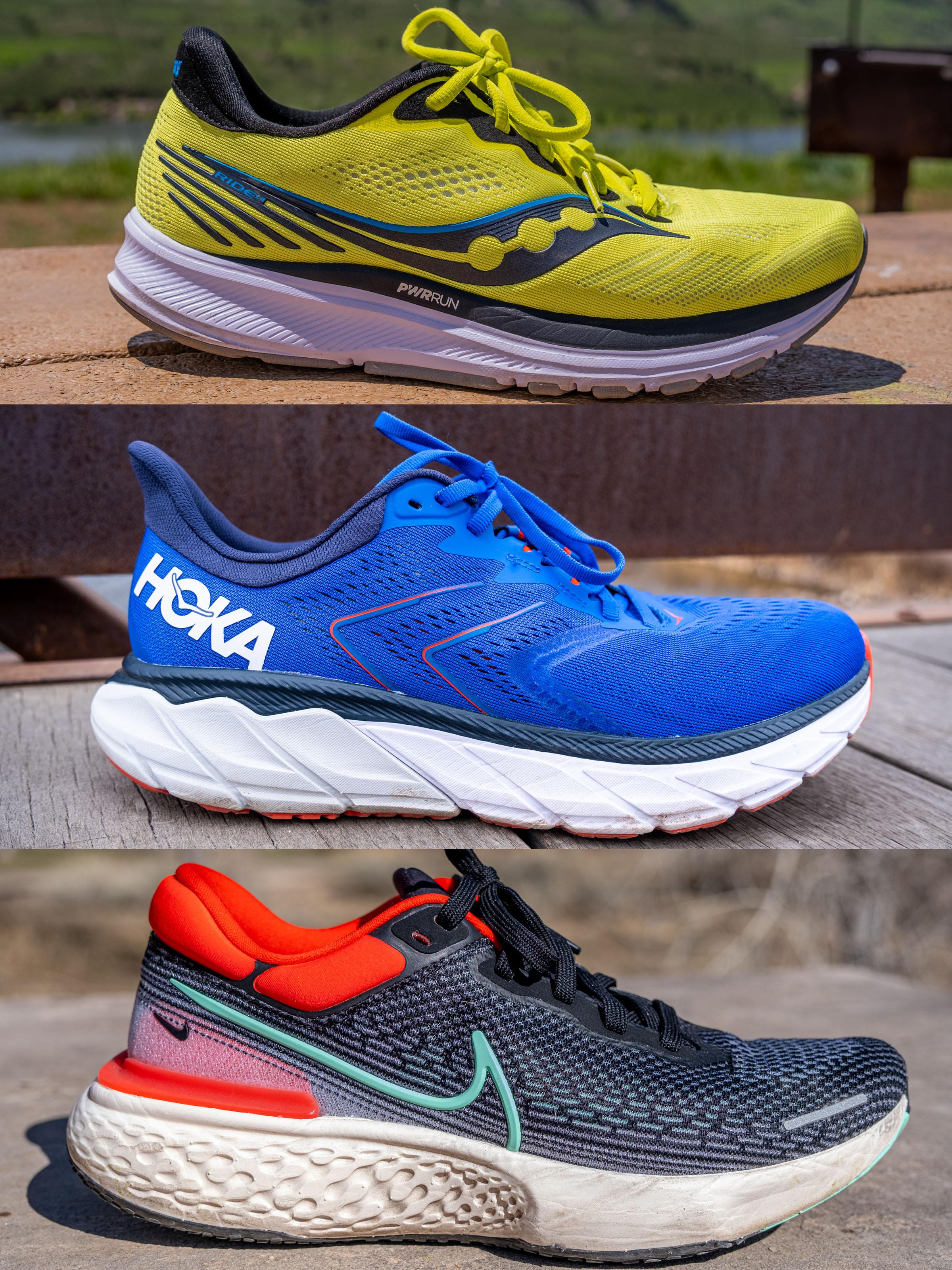
These shoes offer more protection and cushioning than the daily trainer, they are built for piling up the miles, so your feet don’t feel beaten up after a long run or an ultra.
5. Get a shoe for sprints
Also, some highly passionate runners introduce an interval shoe to the rotation. They run sprints in them. These shoes are usually lighter, more aggressive, and offer less protection and support than both tempo and race shoes. In this case, stiffer might be better as shown in this study.
Rotation with 6+ shoes
When a runner goes extremely nerdy, they might have 6 or more shoes in their rotation. One example would be having a race shoe, one shoe for intervals and one for tempo work. In the slower world, a daily trainer, endurance shoe and a recovery shoe. And that’s without running on trails or simply mixing other things in.
How to ask for advice on shoe rotation
One of the reasons for creating this guide was seeing many questions that just say “What should I add to my rotation” along with the photo of their current setup.
It’s difficult to answer this question.
Next time you ask for advice, keep these in mind:
- We don’t know what you’re training for. Specify that in your question. What’s your goal?
- We don’t know how often you run, where you run, what’s your running experience. Specify that in your question.
- What type of runs are you currently running? What do you want to work on? Specify that in your question. Runners who only jog don’t have the same needs as runners who love fartlek and do trail races.
- If you’re looking for exact models recommendations and not just general advice, specify your pronation and foot strike.
It’s important to cover as much as possible because runners will basically give you an idea of how to level up your running. The more information you offer, the better the advice.
Conclusion
After all, the idea of running is to cherish your miles. If your shoes can help, go for it.
 Hiring remote: Content writer / review specialist in
Hiring remote: Content writer / review specialist in 